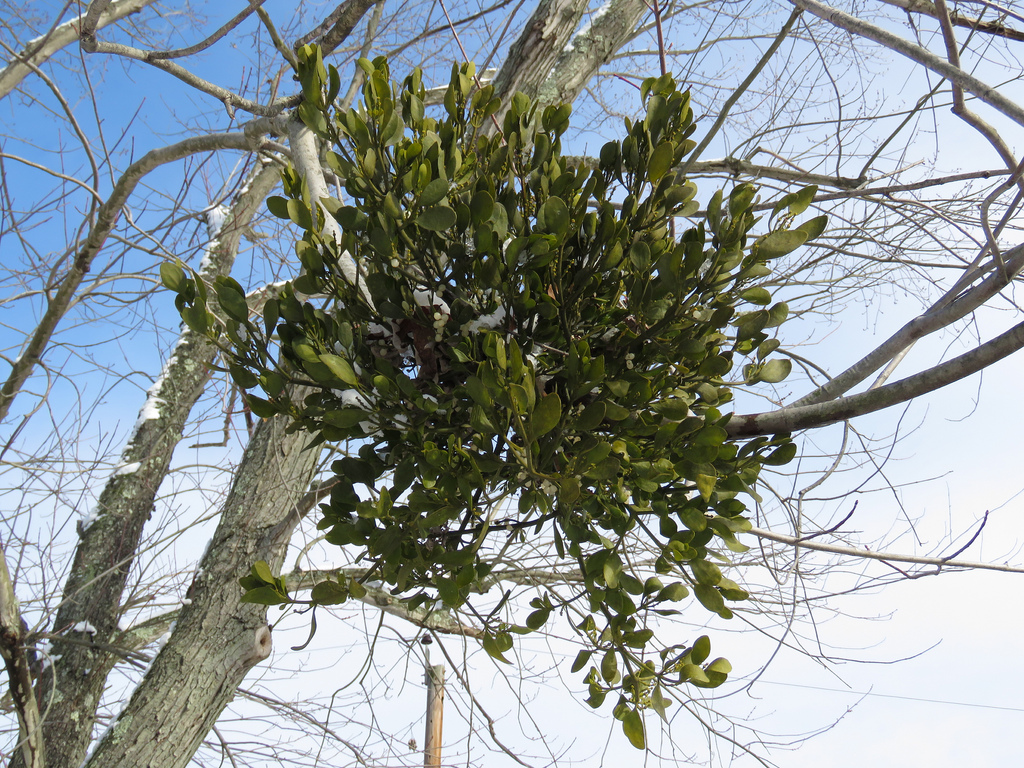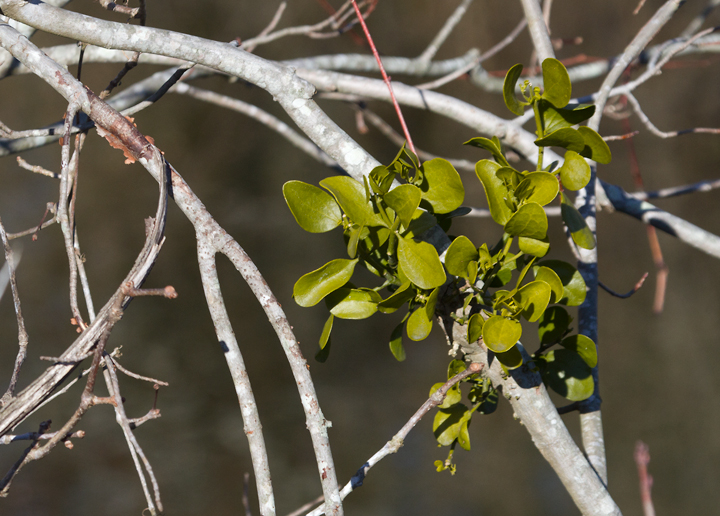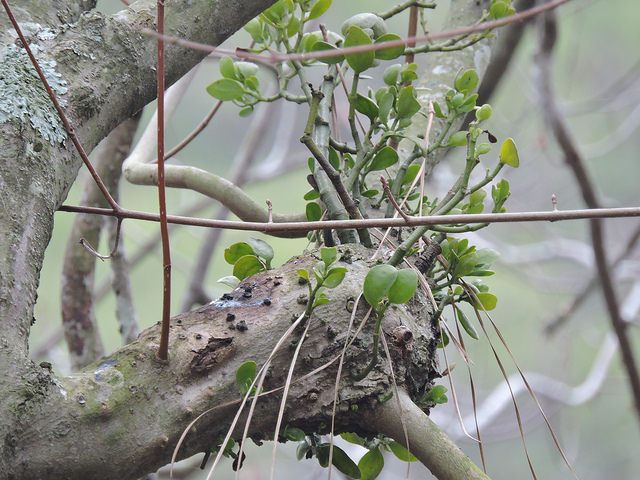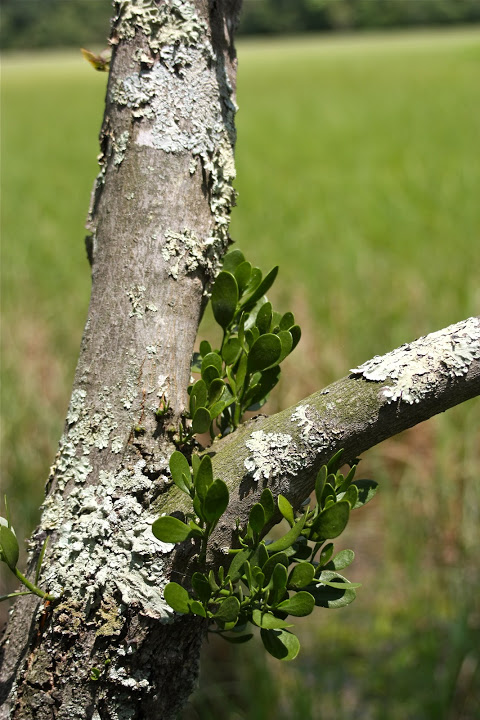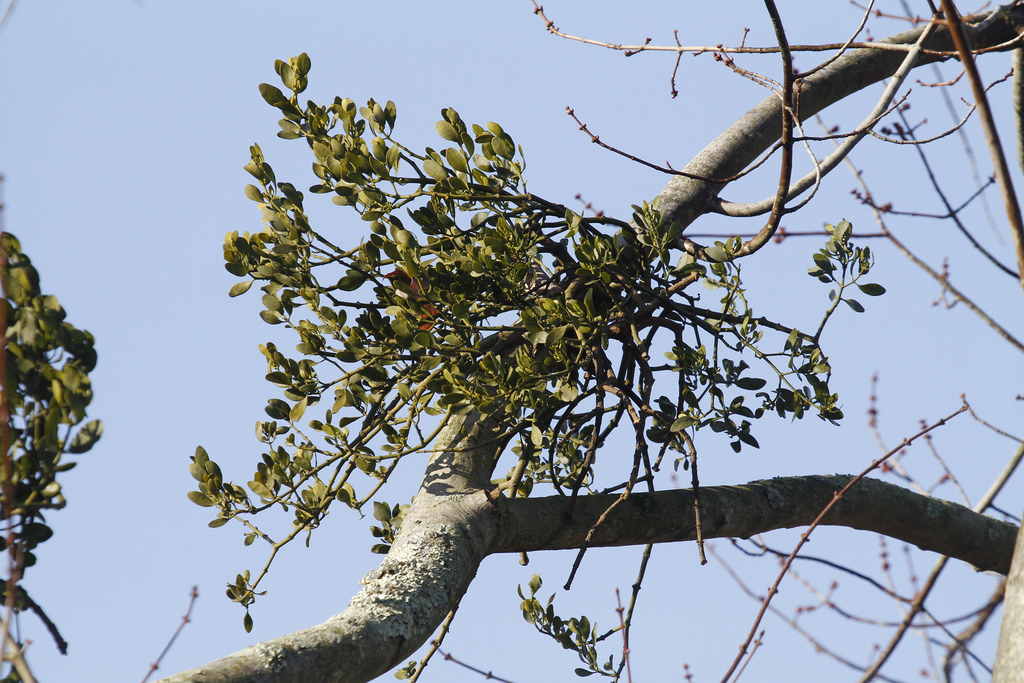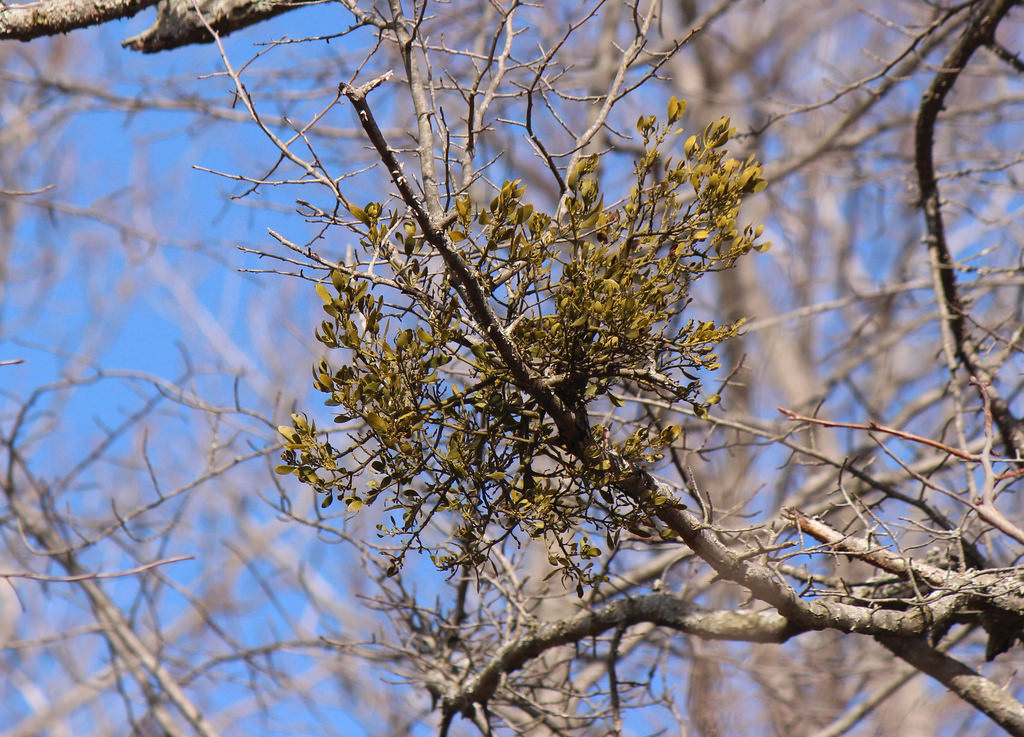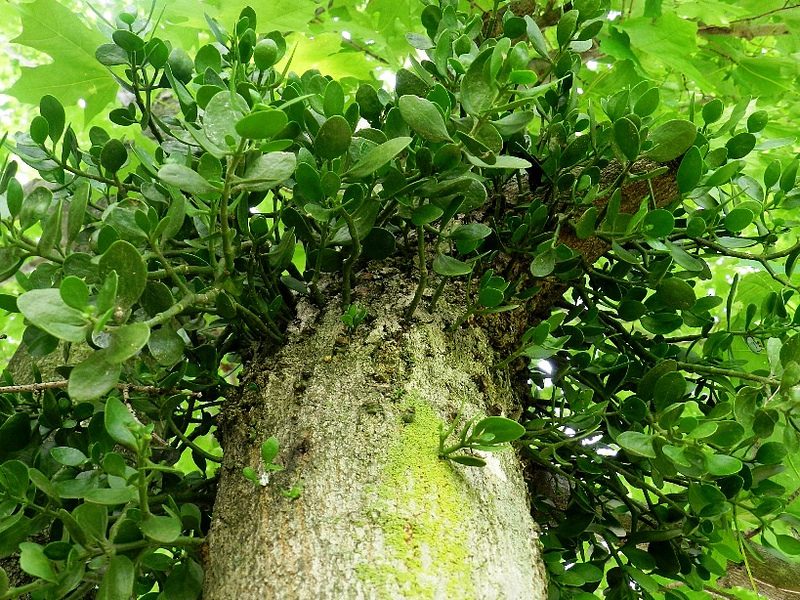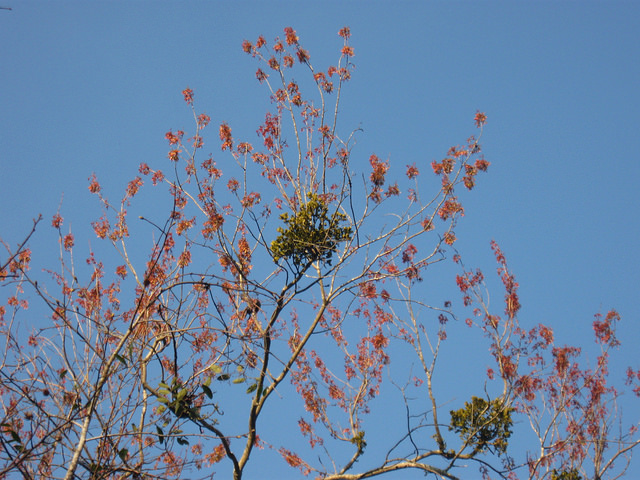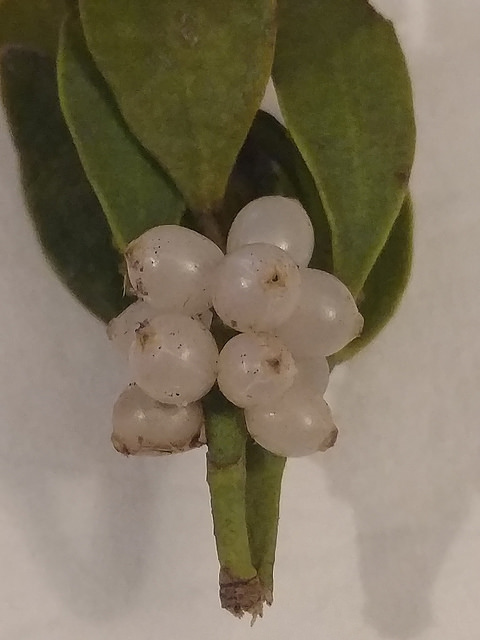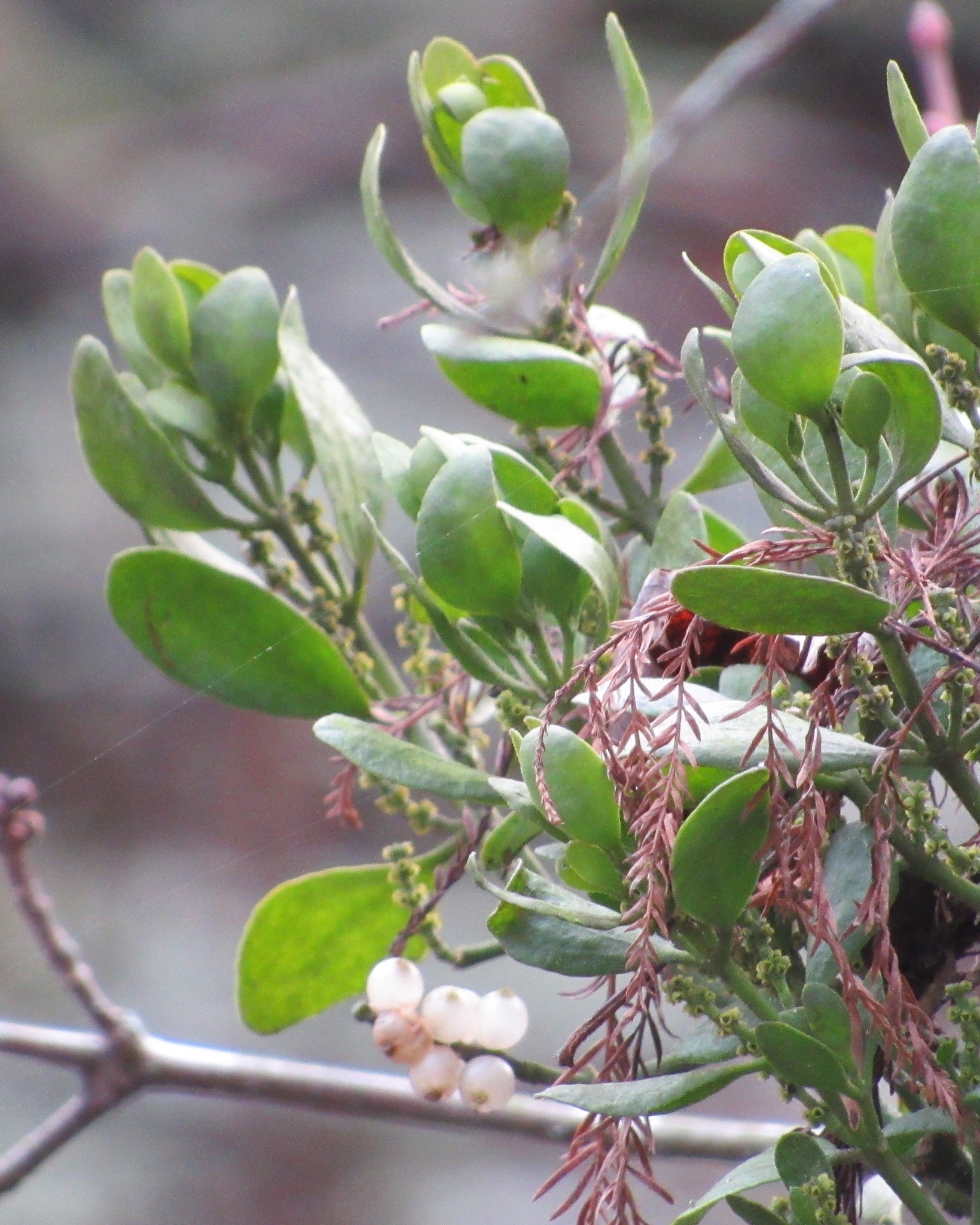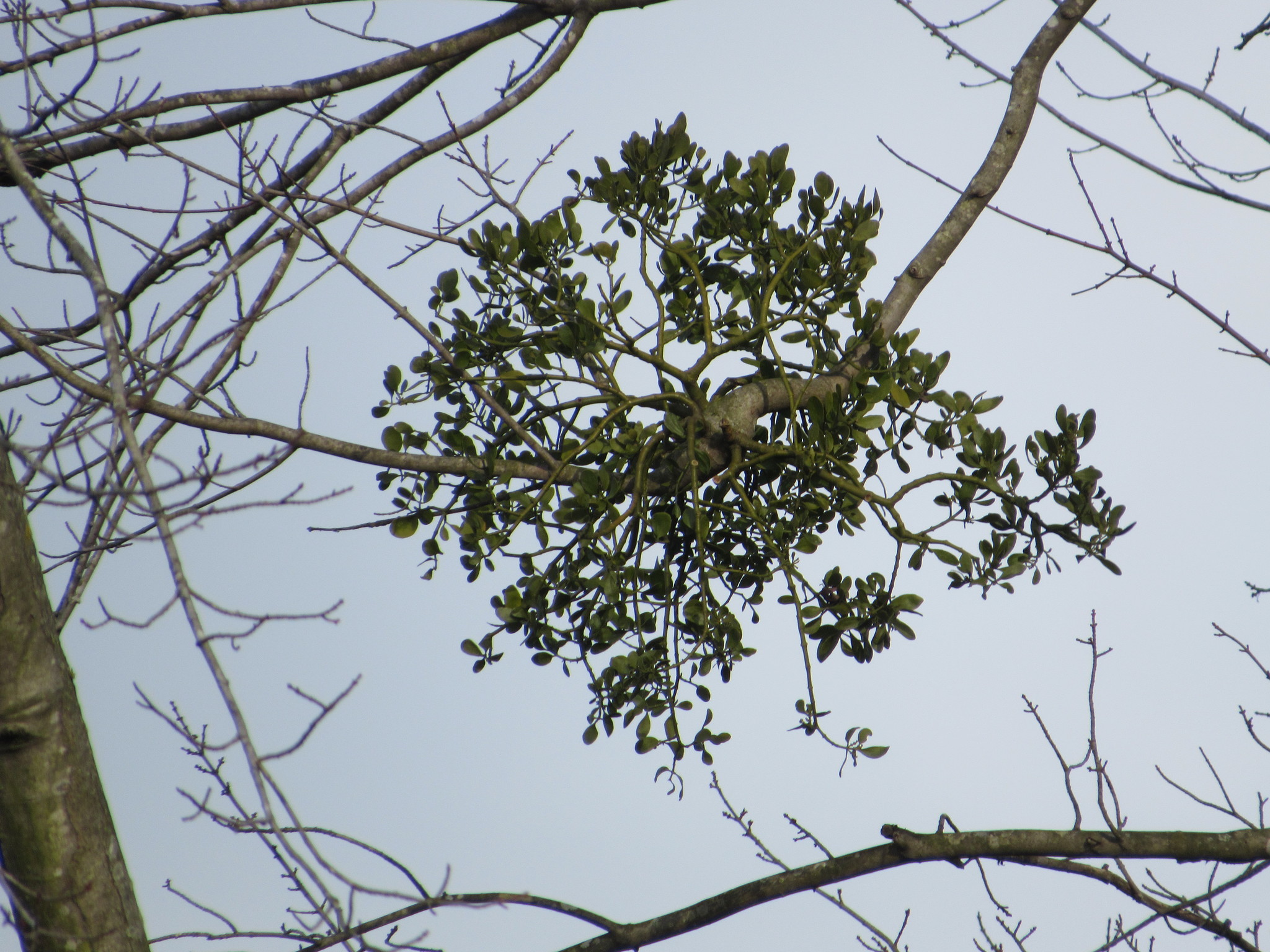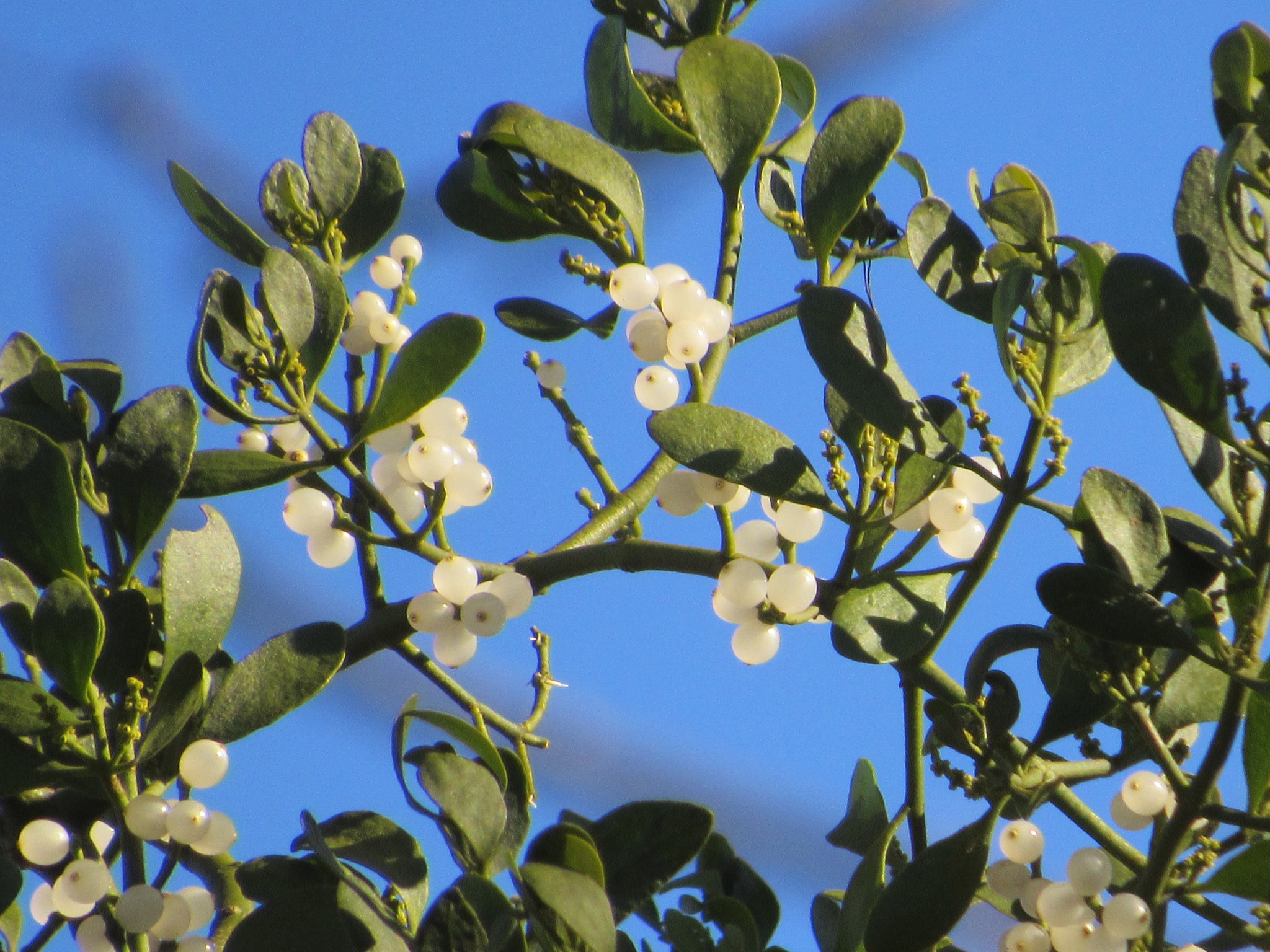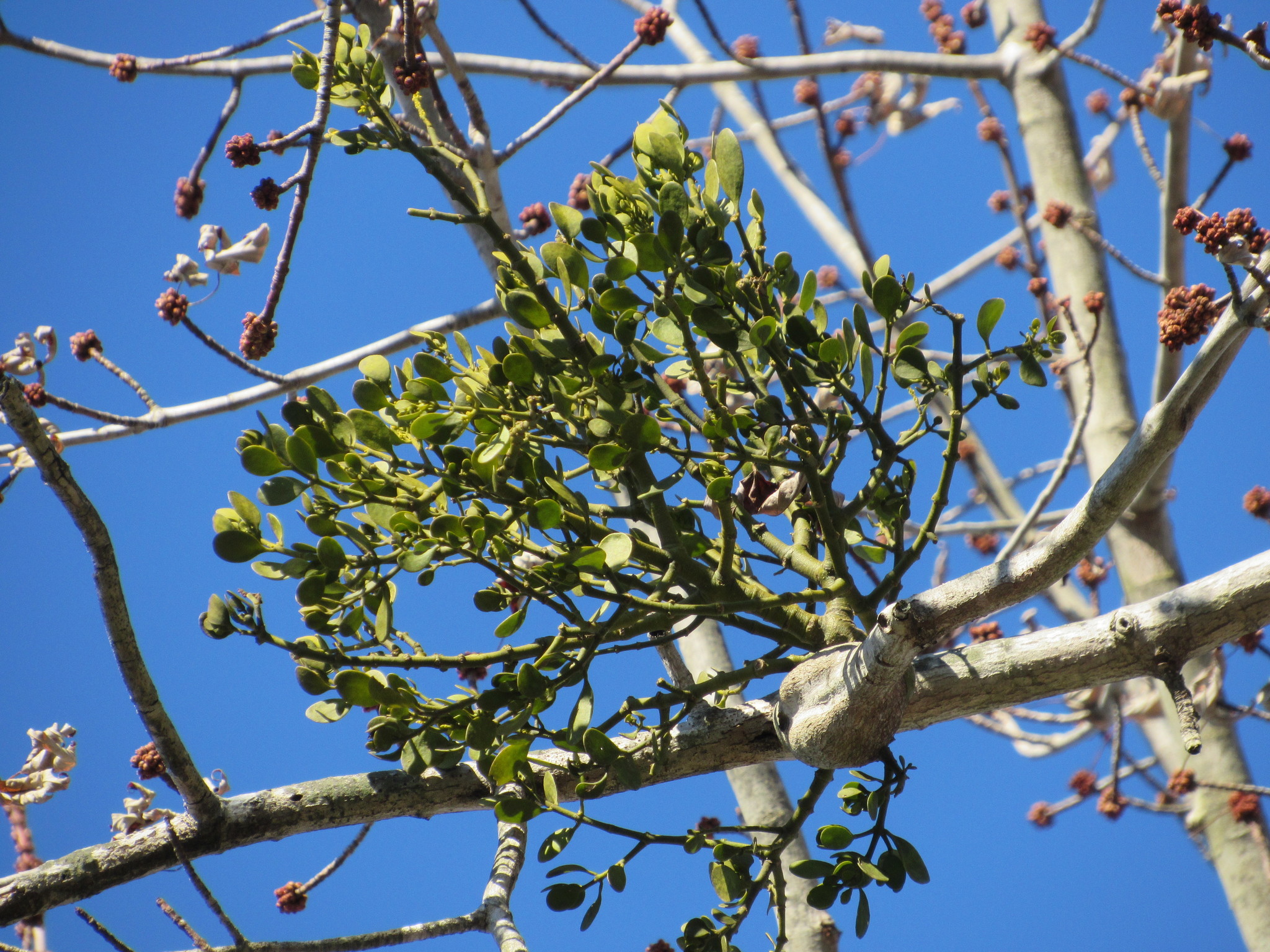Map Snapshot





















456 Records
Status
American Mistletoe is an evergreen, hemi-parasitic sub-shrub that is native to the southeastern United States. It is typically found growing on Red Maple, but also occurs on oaks, gums (Nyssa spp.), and some other deciduous trees.
Description
American mistletoe has opposite, leathery, evergreen leaves and grows in ball-shaped clumps in tree canopies. Mistletoe produces white berries (technically, drupes) having sticky pulp. These are eaten by birds. As the berries pass through a bird's digestive tract, the pulp remains sticky, enabling the seeds to spread through bird droppings to the branches of trees that the bird lands on. Fruits also disperse by sticking to birds' bills and to their feathers. The seed sprouts where it lands, and small roots emerge. These penetrate the tree bark and develop into haustoria, or feeding organs that can absorb sugars and other foods from the host tree. The green color of the plant indicates that it contains chlorophyll and can obtain some of its food through photosynthesis.
Where To Find
Most common on the coastal plain but can also be found along the Fall Line. Usually occurs in mesic or wet habitats; often abundant in swamp forests (Weakley, et al., 2012). Clumps, or balls, of mistletoe are easy to spot in the winter, when deciduous trees are bare.
Relationships
Birds feed on the fruits and spread the seeds.
Primary host plant of Great Purple Hairstreak.
Seasonality Snapshot
Source: Wikipedia
| Phoradendron leucarpum | |
|---|---|

| |
| Phoradendron leucarpum[1] | |
| Scientific classification | |
| Kingdom: | Plantae |
| Clade: | Tracheophytes |
| Clade: | Angiosperms |
| Clade: | Eudicots |
| Order: | Santalales |
| Family: | Santalaceae |
| Genus: | Phoradendron |
| Species: | P. leucarpum
|
| Binomial name | |
| Phoradendron leucarpum | |

| |
| Occurrence data from GBIF | |
| Synonyms[2] | |
| |
Phoradendron leucarpum is a species of mistletoe in the Viscaceae family which is native to the United States and Mexico. Its common names include American mistletoe, eastern mistletoe, hairy mistletoe and oak mistletoe. It is native to Mexico and the continental United States.[3] It is hemiparasitic, living in the branches of trees. The berries are white and 3–6 millimeters (0.12–0.24 in).[4][5] It has opposite leaves that are leathery and thick. [6] Ingesting the berries can cause "stomach and intestinal irritation with diarrhea, lowered blood pressure, and slow pulse".[4][7] This shrub can grow to 1 meter (3.3 ft) by 1 meter (3.3 ft).[7]
Culture and tradition
[edit]Phoradendron leucarpum is used in North America as a surrogate for the similar European mistletoe Viscum album, in Christmas decoration and associated traditions (such as "kissing under the mistletoe"), as well as in rituals by modern druids. It is commercially harvested and sold for those purposes.[8]
Phoradendron leucarpum is the state floral emblem for the state of Oklahoma. The state did not have an official flower, leaving mistletoe as the assumed state flower until the Oklahoma Rose was designated as such in 2004.[9]
Ecology
[edit]Over 60 species of trees are hosts to P. leucarpum, especially trees in the genera of Acer (maple), Fraxinus (ash), Juglans (walnuts), Nyssa, Platanus (plane trees), Populus (poplars), Quercus (oaks), Salix (willows), and Ulmus (elms).[2]
Wildlife
[edit]While the sticky substance covering the fruits is toxic to humans, it is a favorite of some birds.[10]
See also
[edit]- Phoradendron villosum (Pacific mistletoe, western mistletoe)
References
[edit]- ^ illustration by Mary E. Eaton, "Our State Flowers: The Floral Emblems Chosen by the Commonwealths", The National Geographic Magazine, XXXI (June 1917), p. 514.
- ^ a b eflora North America; Phoradendron leucarpum Retrieved 24 May 2018.
- ^ "Phoradendron leucarpum". Germplasm Resources Information Network. Agricultural Research Service, United States Department of Agriculture. Retrieved January 14, 2008.
- ^ a b "Phoradendron leucarpum (P. serotinum)". North Carolina State University. Retrieved November 30, 2014.
- ^ "Phoradendron Mistletoe". Jepson Herbarium, University of California, Berkeley. Retrieved November 30, 2014.
- ^ "Oak Mistletoe (Phoradendron leucarpum))". Carolina Nature. Retrieved November 30, 2014.
- ^ a b "Phoradendron leucarpum - (Raf.)Reveal.&M.C.Johnst". Plants For A Future. Retrieved November 30, 2014.
- ^ "Mistletoe (Phoradendron leucarpum)". Purdue University. Retrieved November 30, 2014.
- ^ "Oklahoma Symbols". Oklahoma Historical Society. Archived from the original on 30 January 2023. Retrieved 15 February 2023.
- ^ Niering, William A.; Olmstead, Nancy C. (1985) [1979]. The Audubon Society Field Guide to North American Wildflowers, Eastern Region. Knopf. p. 622. ISBN 0-394-50432-1.
